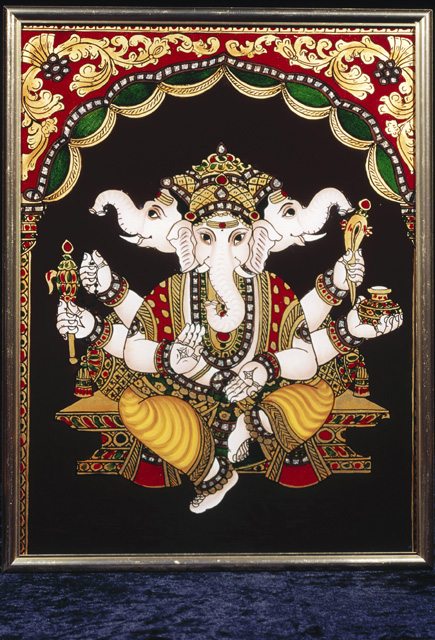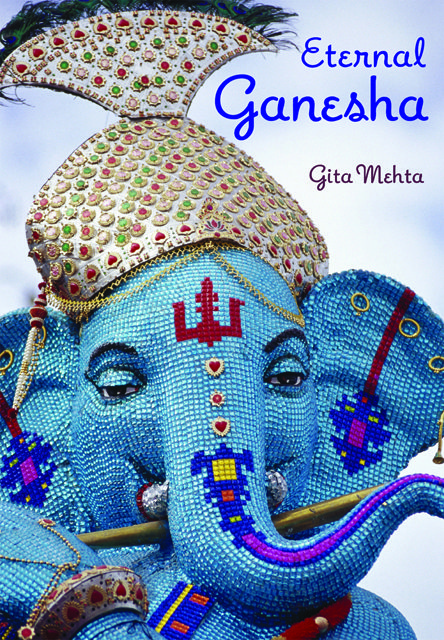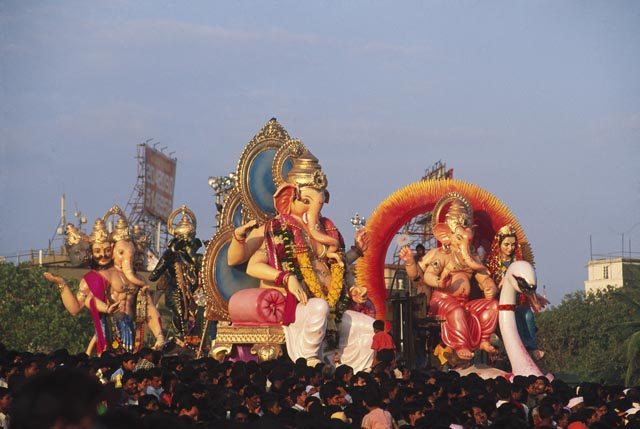A Farewell to Gita Mehta
The noted Indian-American author passed away on September 16, 2023 at the age of 80 in India.
I had the pleasure of interviewing her in 2009 when her book ‘Eternal Ganesha’ was published. She was a thinker, film-maker and the author of five books: Karma Cola, Raj, Snakes and Ladders, River Sutra, Mountain Sutra, and Eternal Ganesha. Married to publisher Sonny Mehta, the visionary head of Knopf, they were a much celebrated global couple, a part of New York society. She had a storied life, starting with freedom fighter parents and a rich Indian life.
Read her obituary in Mint Lounge by Rahul Jacob

Gita Mehta and Eternal Ganesha
When the writer Gita Mehta was growing up in Orissa, a small ancient image of Ganesha was unearthed in a mound of dirt as the foundations of their family home were being laid. “ As nothing else was excavated, as no other idols appeared to suggest that a long forgotten temple lay crumbling under the ground, the little stone figure was deemed to be a sign of divine blessing,” she recalls. “ Everyone agreed the house would be lucky since the Lord of Beginnings had chosen to hide in the earth until the house was ready to be built.”
This is the story that Mehta recounts in her book, “Eternal Ganesha’ (Vendome Press) which is a virtual celebration of this wonderful, delightful God who is universally loved as a harbinger of good luck and the remover of obstacles, and for his benign interaction with the affairs of humans.
This sumptuous oversized book is laden with 125 color images of the elephant headed deity who appears just about everywhere from the walls of ancient temples to contemporary art work to posters plastered in the bazaars. He is the most popular god of the Hindu pantheon and everyone feels intimately connected to Him.
“I’ve always kept the Ganesha which came out of my parents’ home,” confided Mehta when I interviewed her once in New York. “That is the one image that goes with me wherever I go. He came out of the Indian soil so to me he’s like an umbilical cord that connects me to India. So it doesn’t matter where I live – he is my India.”

Indeed, when Mehta was asked to write this book, she felt it was an auspicious sign because she had just had a new grand-daughter, and isn’t Ganesha the Lord of New Beginnings? Mehta, who is the author of several books including ‘Karma Cola’ and ‘Snakes and Ladders’, brings the many myths and attributes of Ganesha alive in this book.
Fun loving and jovial, Ganesha is very accessible and is believed to be the Pitcher of Prosperity, the Granter of Boons and the Guarantor of Success. He is the Lord of Wisdom, a scribe who broke off his own tusk to use as a pen when transcribing the epic tale of Mahabharata for the sage Vyasa.
With his elephant head, his potbelly, his weakness for sweets and his preferred vehicle of a mouse, he is quite irresistible. He is a god who has crisscrossed faiths in India to become the icon of protection, of good luck and prosperity.
In India, Ganesha has super celebrity status and his image is everywhere. Any new task – be it the signing of a business deal, the making of a movie or the buying of a house – will begin only after Ganesha is invoked.
Mehta writes that his trunk is symbolic of the plough, his belly of a bursting granary and farmers have worshipped him as the Lord of Farming and as the Lord of Water; his festival is celebrated in the season of rains in the hope of bountiful harvests. He is the one who safeguards homes, and rare is a Hindu home without an image of Ganesha.

“ Unsurprisingly the lord of Prosperity also attracts the deep devotion of the business community,” she writes. “ Yesterday’s traders may have become today’s venture capitalists but neither would dream of engaging in financial speculation without the protection of their favorite deity, the Guarantor of Success.”
As she points out, Ganesha is also the special god of India’s vast student population: “Many students believe if they slice a closed text book with a Ganesha medallion the book will fall open at the very topic on which they will be examined, and before entering an examination hall cautious students might recite the Ganesha prayer.”.
But he’s much more than just a good luck emblem: She says: “He is regarded as the Origin of the Universe, the Lord of Connection, of Cause and Effect, the Moment of Creation. He’s really a metaphor for a philosophical quest, an eternal search.”
In the most humble hut a Ganesha idol might consist of a simple triangle made of mud with a streak of vermilion on its apex. Ganeshas have been fashioned out of ust about anything from green bananas, peanuts, marigolds, and in some cases matchsticks or discarded rubber tires. This jovial god is very much a people’s god.
Ganesha images are now exported to all parts of the world to meet the needs of the Indian Diaspora. And at home, the images often have a contemporary touch: during cricket fever, Ganesha is shown with a cricket bat in his hand and the Olympics finds him in a tracksuit! Yes, he’s worn everything from a Gandhi cap to a Windsor knot under his elephant trunk.

In the book, there are chapters about the myths and the meanings and marvelous images of the Ganesh Chathurthi festival. How does one reconcile the elephant head with the human body? Writes Mehta, “The comically corpulent body indicates the physical appearance is an illusion which must be overcome to reach truth. It is also symbolic of a divinity vast enough to contain the entire universe and all the contradictions that exist within it.”
Indeed, one finds Ganesha with three heads, six heads, and even six arms, eight arms, sometimes 32 arms, and Mehta explains the many contradictions of Ganesha, who has the head of an elephant, the body of a man, bound by a snake, and rides on a mouse.
“These contradictory animals – elephant and mouse, serpent and man – are contained within a single image, pointing to the supreme goal of Hindu metaphysics, finding an overarching unity in which all apparent contradictions can be contained. They also point to a moral imperative – that opposites can and must live in peaceful coexistence.”
She adds, “It is the union of the small with the great, the microcosm with the macrocosm. Illustrating the intimate connection between all life forms, as a meditational diagram Ganesha incarnates Hindu philosophy’s fundamental law, the unity in diversity that it is humanity’s primary duty to maintain.”
Turning the pages of the book, you feel it is a celebration of pure faith, love and devotion. Says Mehta: “What I love about Ganesha is that he symbolizes the greatness of Sanatana Dharma. The best thing that happens to you is that he forces you to explore yourself, the greatness within you.”
© Lavina Melwani

